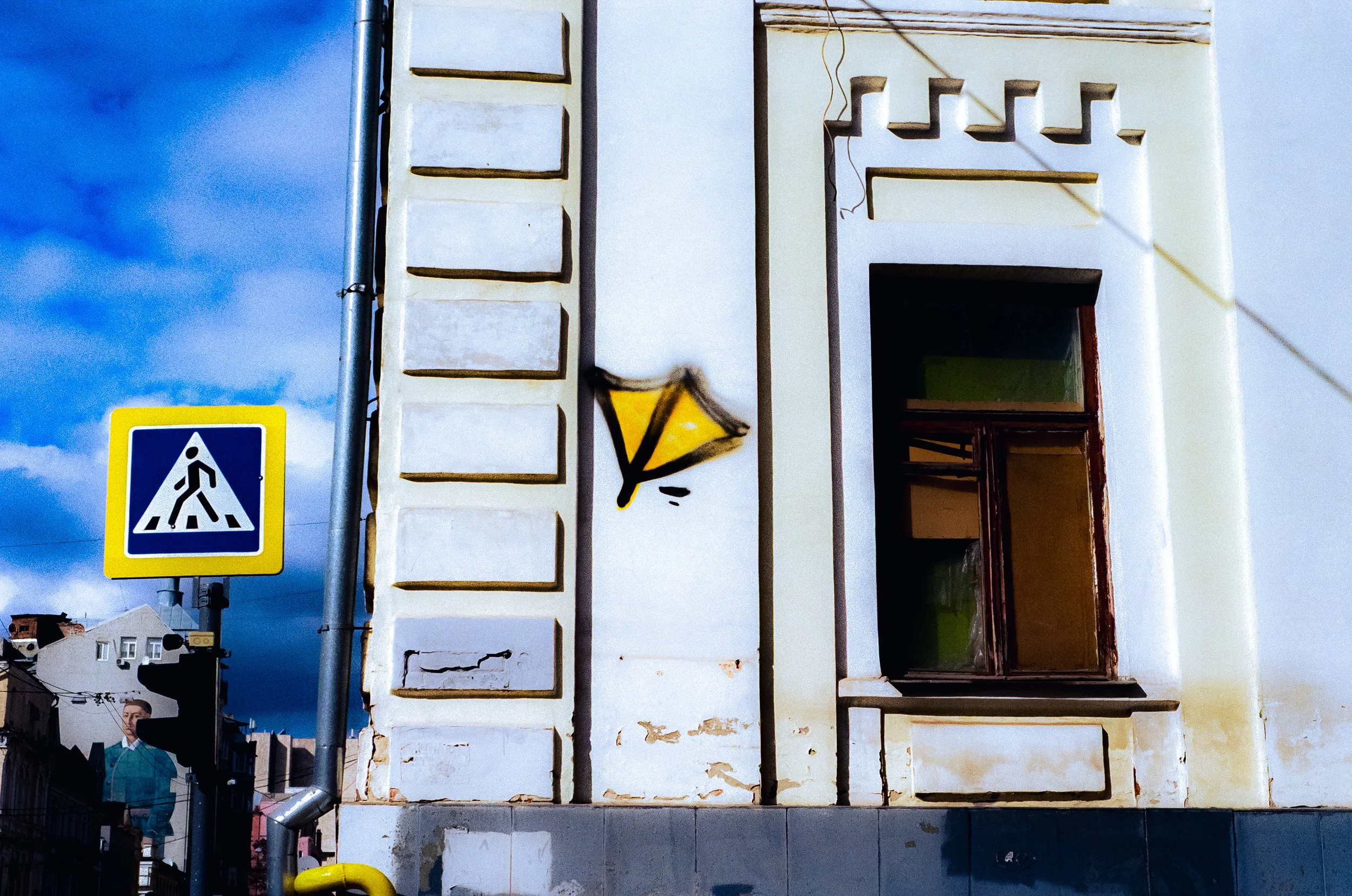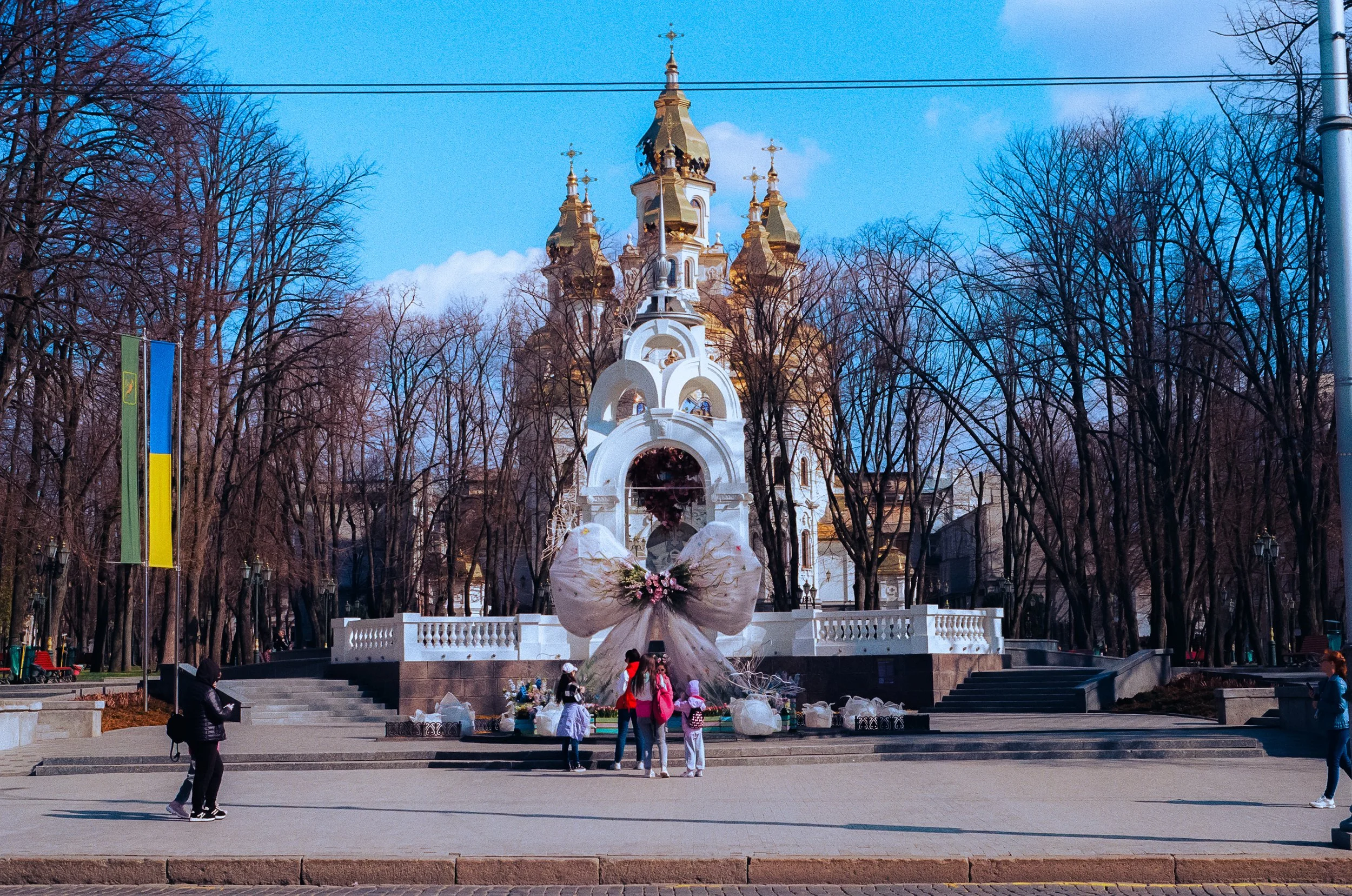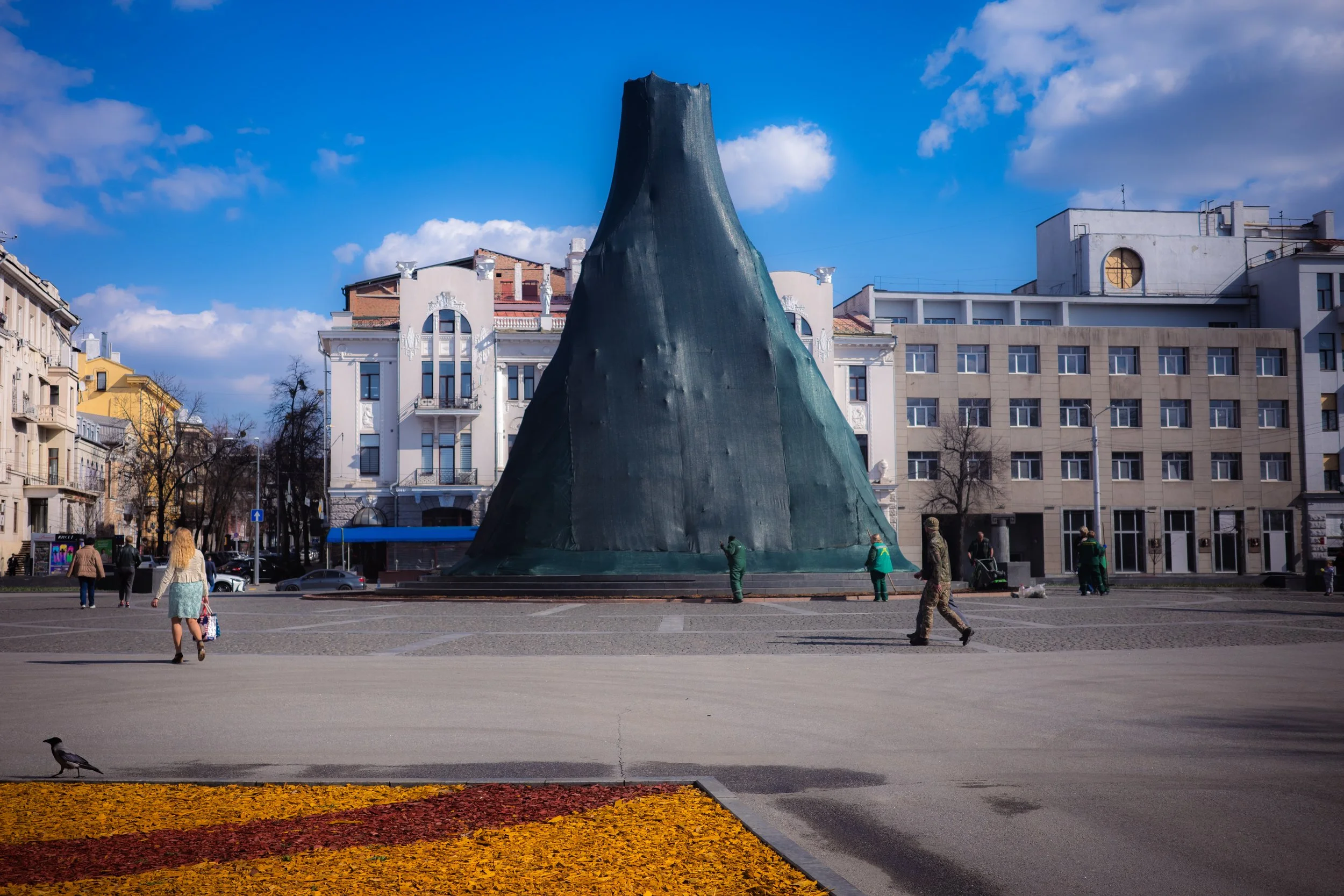Час чує нас / Time Hears us (Kharkiv in Spring #2)
“They protected the world with the circle of stars, afraid that the ramparts of the world, flying away like a flame, should suddenly vanish into the great void, for then all the rest would follow, and for the same reason. And the heavens, the temple of thunder, would crumble over our heads; the earth, in one fell swoop, would give way beneath our feet: in the merged ruins of earth and sky, all beings, dissolving, would be lost in the deep void. In an instant, nothing would remain but empty space and blind atoms.”
Lucretius, De rerum natura
Kharkiv is a huge city that seems frozen in time. It moves with fragility to a daily rhythm. Its past and its future seem imaginary, ready to disappear completely and reappear as something else entirely. It is a huge colouring-in picture, a sketchbook for the imagination and a common identity to be reconstructed. The city functions like that old rusty automaton that seems more solid than all the modern innovations that have followed it. Like in the Kafka's castle, which seems to have had neither a past nor a future, the road maintenance workers, always there to make up the old urban lady, sometimes sleep there, between two sweeps of the broom, between two metres of asphalt patched up.
All the people I've met have told me that there is a Kharkiv before and after the large scale invasion, as if two completely different towns could exist without the urban planning (apart from the few buildings that have been destroyed) having changed radically. In the space of a few months, a new city was born. I only got to know the transitional Kharkiv between February 2024 and March 2025 and, apart from feeling increasingly at ease in this strange city. I only spoke Ukrainian there. I only met artists, bar owners and soldiers. I drank more than in Kyiv and met far more men than women.
One of the city's most famous artists is the graphic artist Gamlet, who has filled the city's walls with aphorisms that can be recognised at a glance. Before the war, one says that he wrote them in Russian. Returning to Kharkiv after the battle of February-May 2022, he translated almost all his old graphitis from Russian into Ukrainian. ‘Час Чує Нас’ he wrote - “Time is listening us”.
This spring, the authorities put up huge, old-fashioned floral displays to celebrate 8 March Soviet-style. Not ‘Women's Rights Day’, but ‘Women's Day’, a day when men give flowers, put on a shirt, do the washing up and drink less. It seemed completely anachronistic to me. It reminded me of Moscow. In the city centre, the huge statues by the famous Ukrainian author Taras Chevchenko are covered with large sheets that are supposed to protect them, like large shrouds that will only be uncovered the day Russia stops bombing, or, for many, ceases to exist and being a threat to Ukraine. These monumental works are reminiscent of performances by the artist Christo. I see them more as extinct volcanoes, ready to erupt at any moment, tomorrow or in 1,000 years' time.
In the same spot, a beautiful monastery overlooks the river and the right bank of the Lopan river below. Inside, the gazes are evasive, the expressions - sombre. ‘It's a church of katsap,’ my friend tells me. Katsap is one of the derogatory terms used to define Russians. It is thought to come from the Turkish word for ‘goatee’, thus recalling the stereotypical image of the Russian with his long beard (unlike the Ukrainian with a tuft of hair on a shaved head - ‘khokhol’, a term also used pejoratively by the Russians to refer to Ukrainians). Many churches in Ukraine are still affiliated to the Patriarch of Moscow, Kirill, a former KGB agent and the main supporter of Russia's genocidal campaign against Ukraine, who is invariably mentioned during liturgies. This is another anachronism that refuses to die.
“The lady at the entrance to the building sometimes comes to tell me, ‘They're attacking tonight, get ready, the big battle is coming’. To be honest, I don't listen to her anymore,” says artist Konstantin Zorkin in his studio, which also serves as a bomb shelter in the basement. Living day to day, waiting for something to change, is the burden of the people who live here. From autumn 2024, however, the violent acceleration of mobilisation - outside Kyiv - changed the daily lives of men who, if they are not mobilised, have changed their movement habits to avoid military office checks. Some, to get out of this time that neither advances nor retreats, go to the recruitment offices of their own free will. Others immerse themselves in artistic creation. Of the fifty theatres that existed before the war, four or five (all private) continue to work, constantly innovating to keep a small economy afloat, writing new plays (in Ukrainian), rehearsing in the cold, finding costumes, sets and actors still in town and ready to work. The Ermilov Center contemporary art centre is fundraising to continue to organise exhibitions by local and foreign artists and maintain a worthy cultural calendar. The ‘Litmuseï’ museum and art centre, which suffered a bombing in February or March 2025, continues to work to put the history of the city and its writers back at the centre of Ukrainian cultural creation, after decades of Soviet repression and Russification. In the museum courtyard, an exhibition presents a mirror image of the positive memory of Ukrainian writers and, opposite it, the negative memory of their Russian counterparts. The streets of Kharkiv are renamed every time they are bombed.



